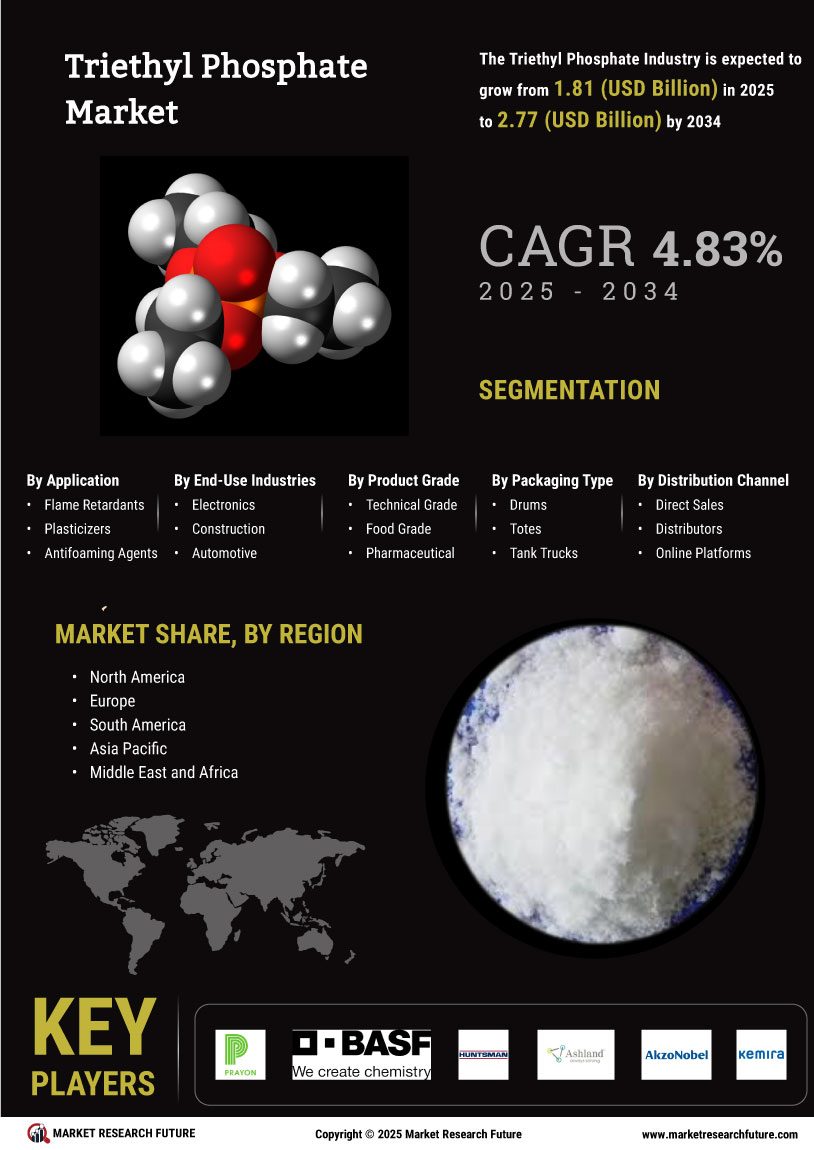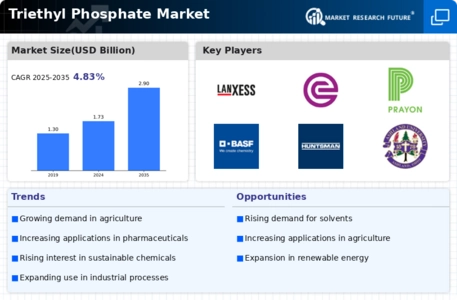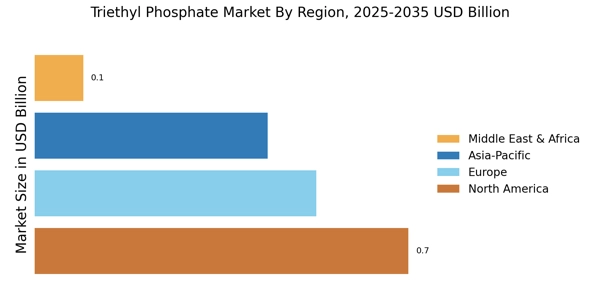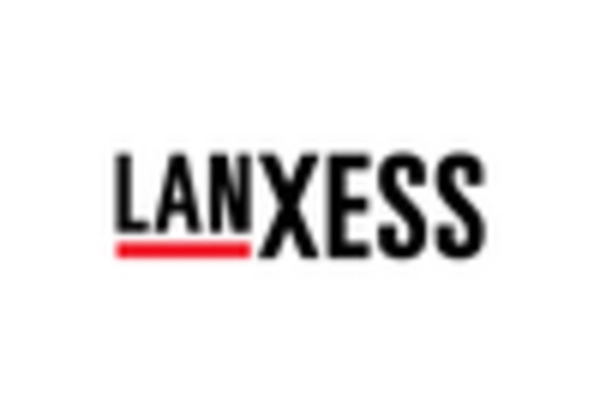Rising Demand in Agriculture
The Triethyl Phosphate Market is experiencing a notable increase in demand from the agricultural sector. Triethyl phosphate is utilized as a pesticide and herbicide, enhancing crop yield and protecting plants from pests. As the global population continues to grow, the need for efficient agricultural practices becomes paramount. Reports indicate that the agricultural chemicals market is projected to reach USD 300 billion by 2025, with a significant portion attributed to phosphate-based products. This trend suggests that the Triethyl Phosphate Market will likely benefit from the expanding agricultural sector, as farmers seek effective solutions to maximize productivity and sustainability.
Growth in Chemical Manufacturing
The Triethyl Phosphate Market is closely linked to the chemical manufacturing sector, which is witnessing robust growth. Triethyl phosphate serves as a solvent and plasticizer in various chemical processes, making it an essential component in the production of plastics, resins, and coatings. The chemical manufacturing industry is projected to grow at a CAGR of 4.5% through 2025, driven by increasing industrial activities and consumer demand for diverse chemical products. This growth indicates a favorable environment for the Triethyl Phosphate Market, as manufacturers seek reliable and efficient chemical solutions to meet evolving market needs.
Focus on Environmental Regulations
The Triethyl Phosphate Market is influenced by a growing focus on environmental regulations. Governments are increasingly implementing stringent policies aimed at reducing harmful chemical emissions and promoting sustainable practices. Triethyl phosphate, being a phosphate ester, is often viewed as a more environmentally friendly alternative to traditional solvents and plasticizers. As industries adapt to these regulations, the demand for eco-friendly chemical solutions is likely to rise. This shift may create new opportunities for the Triethyl Phosphate Market, as companies seek compliant and sustainable options to meet regulatory requirements.
Emerging Markets and Economic Development
The Triethyl Phosphate Market is likely to see growth driven by emerging markets and their economic development. Countries in Asia and Latin America are experiencing rapid industrialization, leading to increased demand for chemical products, including triethyl phosphate. As these economies expand, investments in infrastructure, agriculture, and manufacturing are expected to rise. This economic development could potentially lead to a surge in the consumption of triethyl phosphate, as industries seek to enhance productivity and efficiency. The Triethyl Phosphate Market may find itself well-positioned to capitalize on these emerging opportunities.
Advancements in Flame Retardant Applications
The Triethyl Phosphate Market is poised to benefit from advancements in flame retardant applications. Triethyl phosphate is recognized for its effectiveness in enhancing the fire resistance of materials, particularly in the construction and automotive sectors. As safety regulations become more stringent, the demand for flame retardant materials is expected to rise. The flame retardants market is anticipated to reach USD 10 billion by 2025, with a significant share attributed to phosphate-based compounds. This trend suggests that the Triethyl Phosphate Market may experience increased opportunities as industries prioritize safety and compliance.


















Leave a Comment